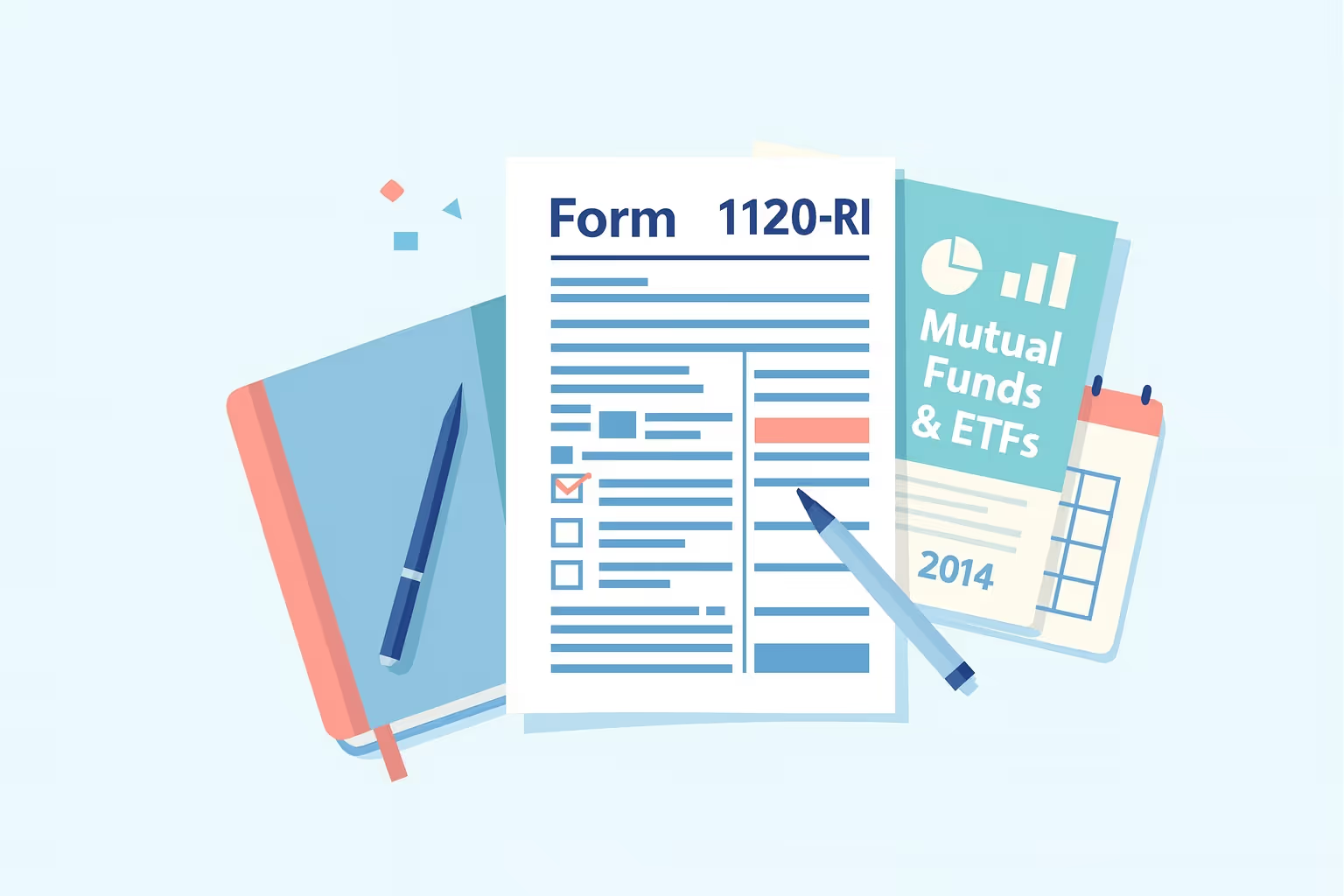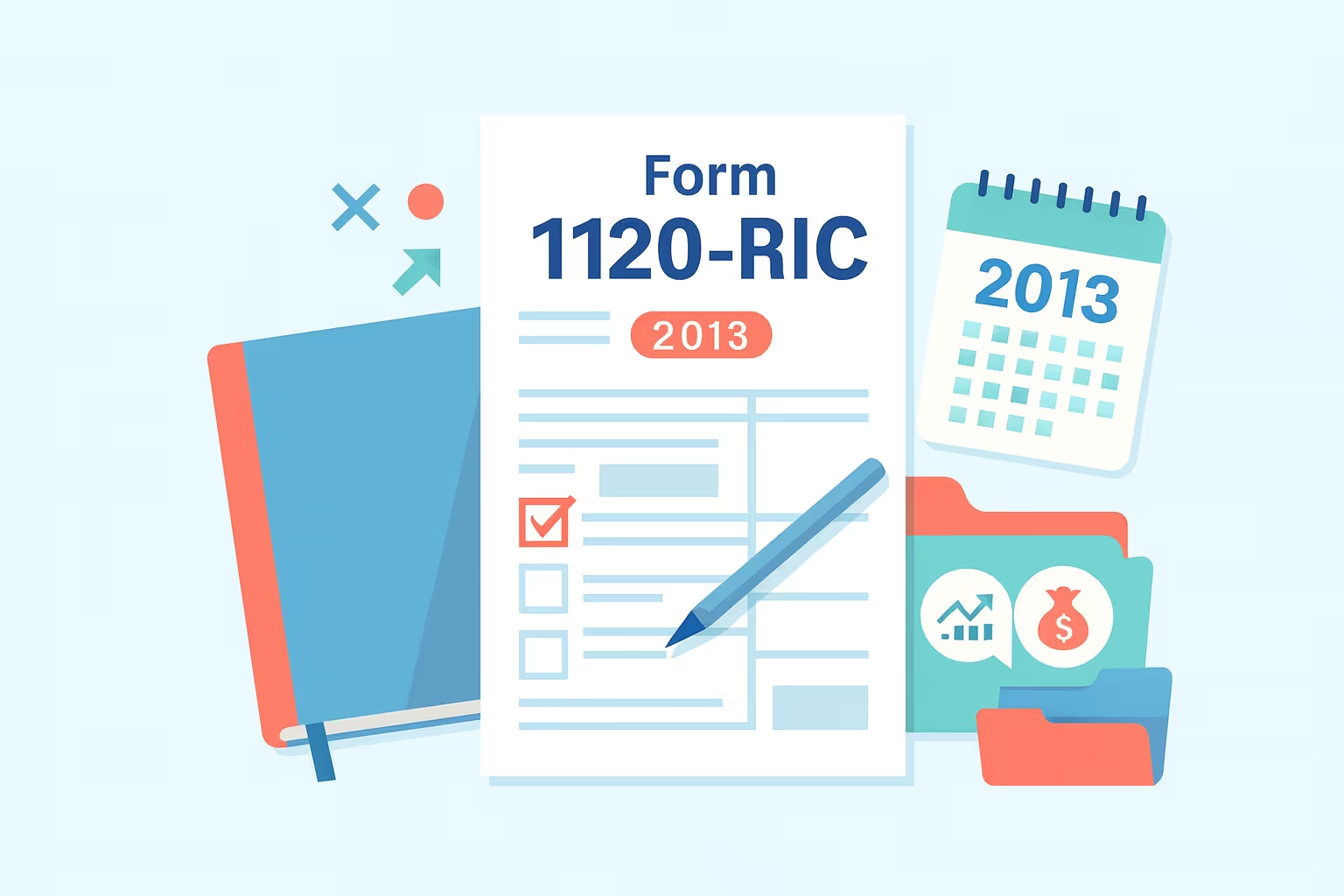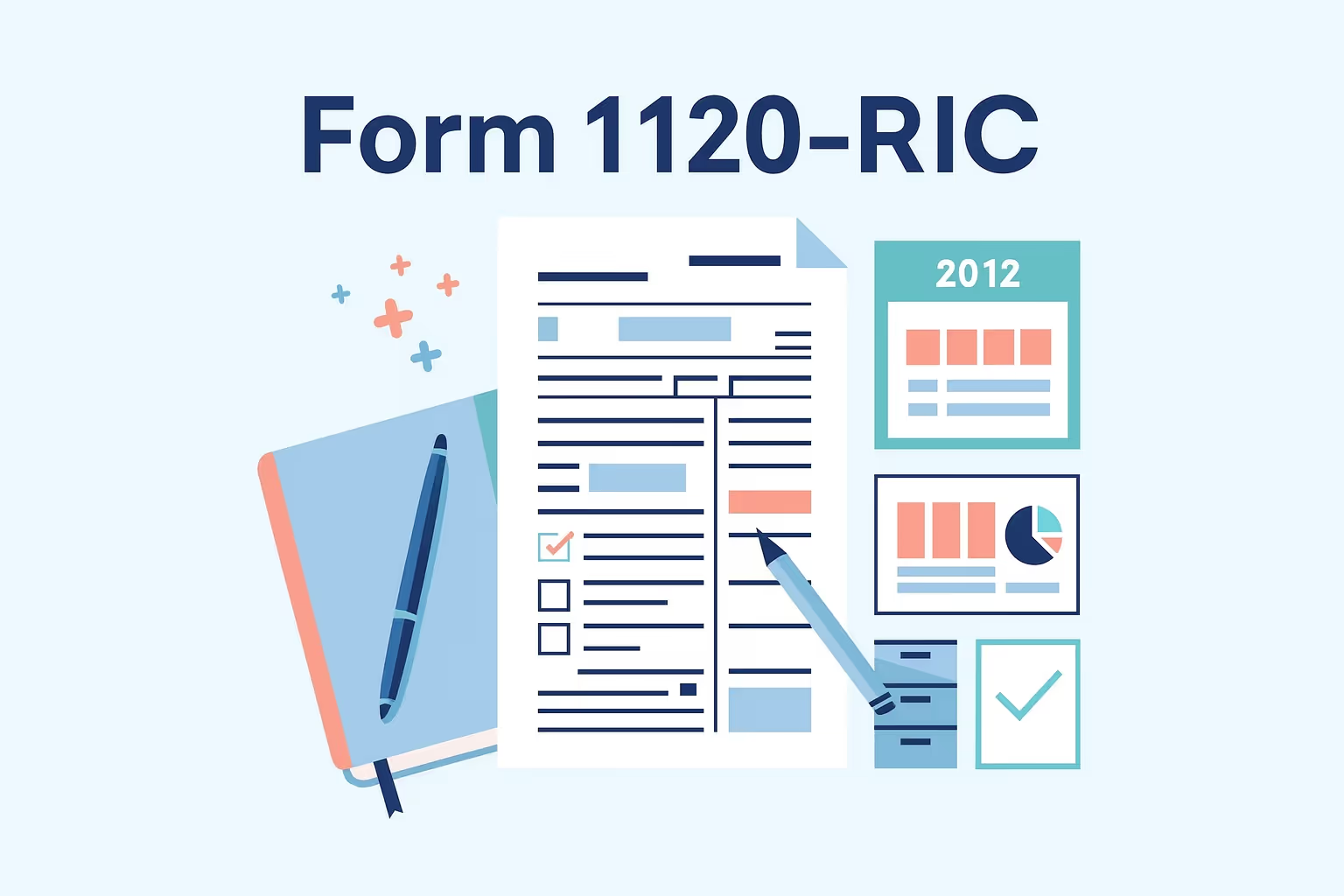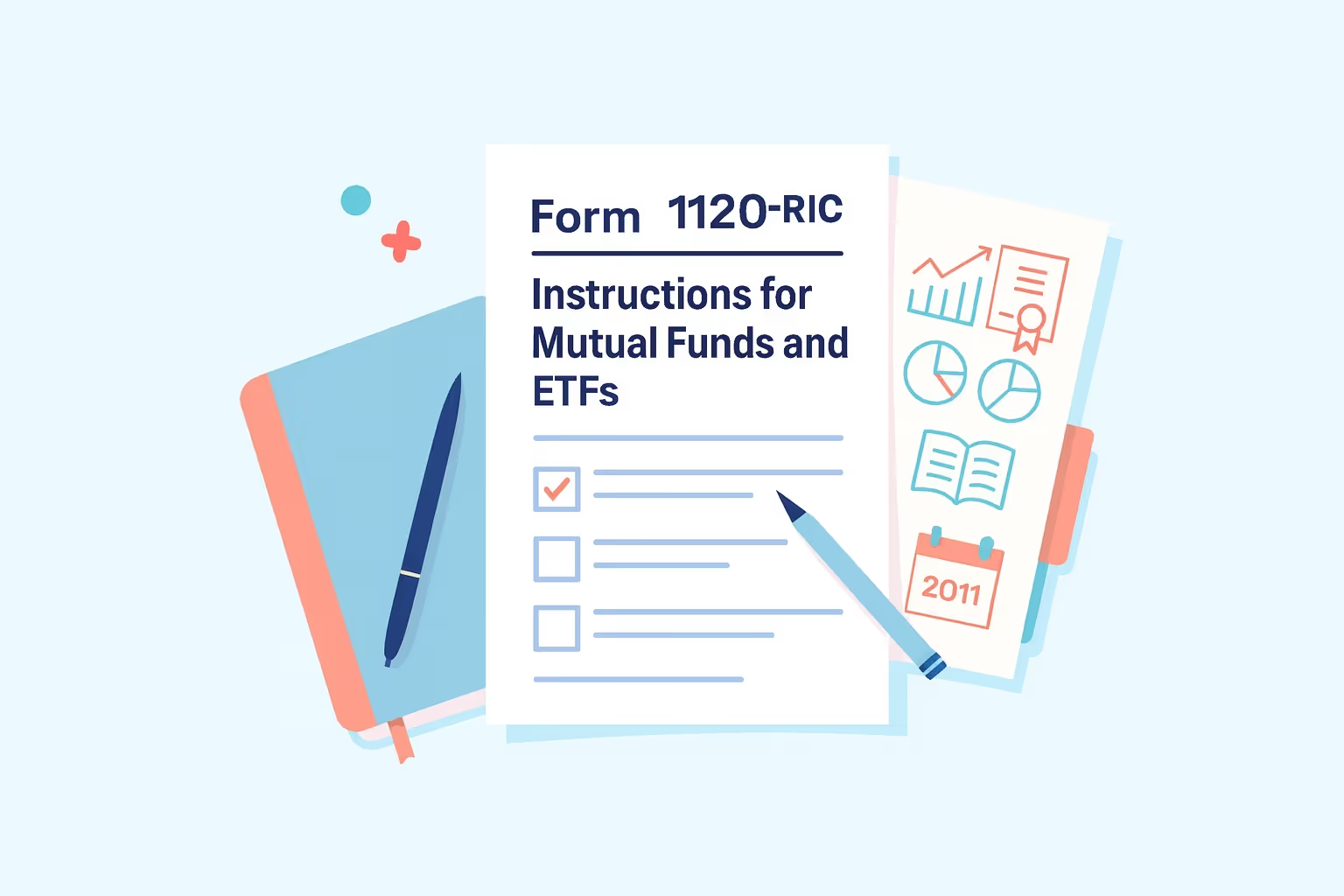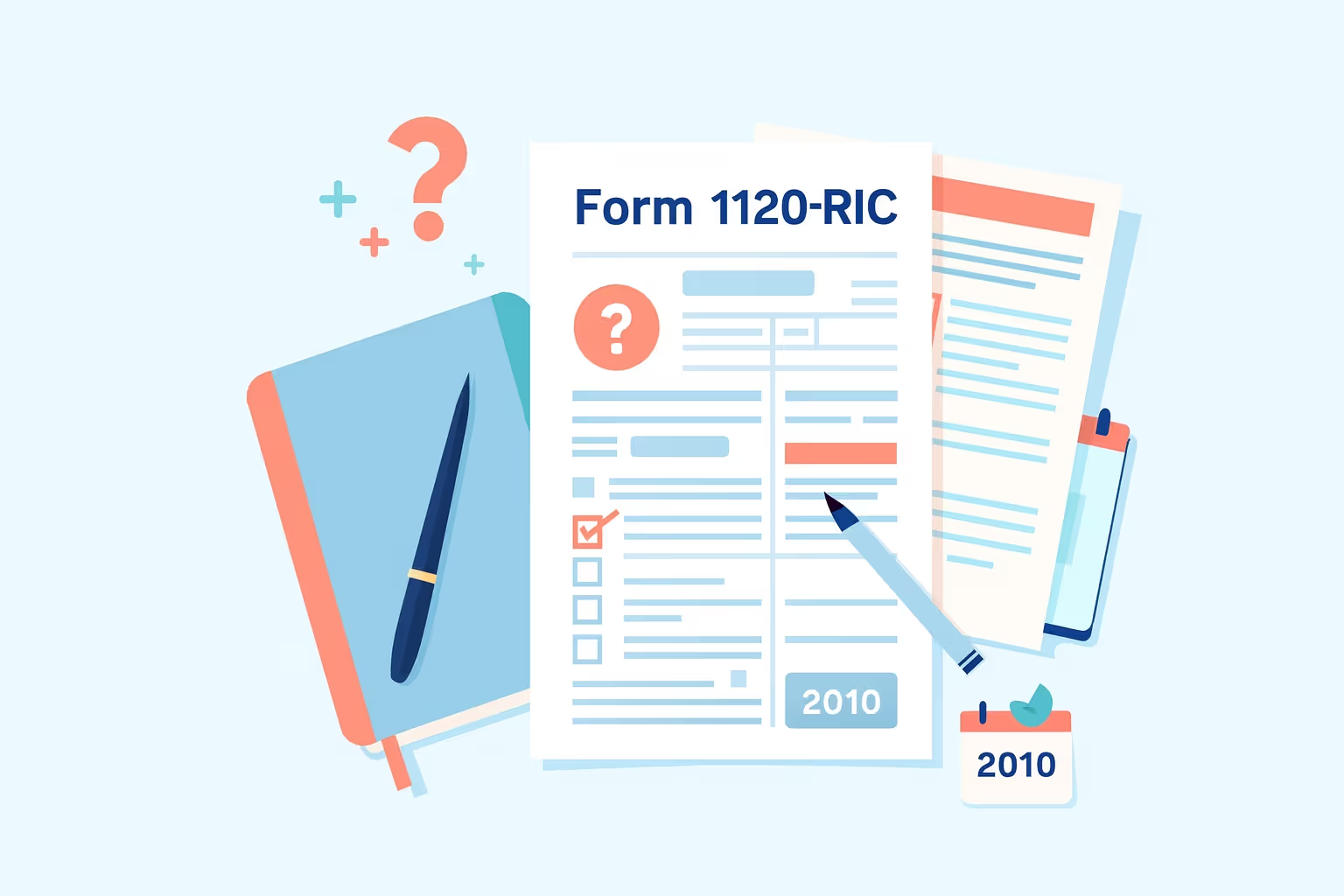
What IRS Form 1120-RIC (2020) Is For
The IRS Form 1120-RIC (2020) is the official U.S. income tax return for regulated investment companies such as mutual funds, exchange-traded funds, and unit investment trusts. These domestic corporations must meet strict qualifications to maintain RIC status, which allows them to avoid double taxation by passing most of their income to individual shareholders. Filing this form accurately ensures compliance with the Internal Revenue Service and preserves favorable tax treatment for investment companies.
For a detailed breakdown of filing requirements, eligibility rules, and step-by-step instructions, see our How to File Federal Form 1120-RIC for Tax Year 2020.
When You’d Use IRS Form 1120-RIC (2020)
A domestic corporation must file this income tax return if it elects to be treated as a regulated investment company under the Internal Revenue Code and meets all qualification tests. Investment companies file Form 1120-RIC to report dividends paid, capital gains, and other income to the IRS. Late or amended filings may be required if errors were found in the original return, especially regarding investment company taxable income, dividends, or deductions.
Key Rules for the 2020 Tax Year
- Pandemic Relief Provisions: The IRS implemented temporary rules that affected net income and deductions for 2020. Certain business expenses, such as accounting and legal services, were deductible at higher rates.
- CARES Act Changes: Corporations could claim employment credits and defer specific payroll taxes, directly affecting total tax liability and net investment income calculations.
- Charitable and Disaster Relief Adjustments: Regulated investment companies could deduct qualified disaster-related contributions of up to 25% of taxable income.
- Excise Tax on Undistributed Income: Companies that owed excise tax on undistributed net capital gain or income must file Schedule D and Form 8613.
- Penalty Relief: The IRS waived several late-filing penalties for qualifying 2020 corporate returns under Notice 2022-36.
Step-by-Step (High Level)
Step 1: Gather Financial and Filing Data
Collect all records related to dividends paid, capital gain dividends, exempt interest dividends, and gross income. Review investment advisory fees, custodian fees, and accounting and legal services.
Step 2: Use the Correct-Year Form
Ensure that you are using Form 1120-RIC for the 2020 tax year. Check applicable boxes for calendar year filers and provide the employer identification number. Follow separate instructions and include all accompanying schedules.
Step 3: Compute Taxable Income
Calculate investment company taxable income by determining total income, total deductions, and net capital gain. Include deductions for accounting, legal services, and registration fees under the Securities and Exchange Commission.
Step 4: Complete and Assemble the Return
The required IRS forms and schedules, including Schedule D, to report capital gains, net foreign currency gain, and other income, are attached. Indicate total assets and total value at the end of the year. Verify that the preparer listed has signed the return and that all applicable boxes are complete.
Step 5: File and Retain Records
Mail or electronically file the return as instructed. For future reference, keep detailed records of total income, total deductions, and total tax. Maintain copies of all investments, forms, and deductions reported.
Common Mistakes and How to Avoid Them
- Failing RIC Qualification Requirements: Before electing RIC status, the corporation must ensure it meets both the income and asset diversification tests.
- Missing Distribution Obligations: The company should pay out at least 90% of the investment company's taxable income as dividends to maintain RIC status.
- Incorrect Computation of Deductions: The filer must verify that accounting, legal, and custodian fees are properly classified and that all other deductions follow IRS instructions.
- Errors in Schedule D or Accompanying Schedules: The taxpayer should confirm that capital gains and net capital gains are reported in the proper order with complete supporting schedules.
- Neglecting Tax Deposits or Payments: The filer must use electronic funds transfer to pay the tax imposed, account for employment credits, and remain compliant with Treasury requirements.
What Happens After You File
The Internal Revenue Service processes Form 1120-RIC returns within approximately eight weeks. The IRS may issue a notice or request clarification if there are errors in computing taxable income or reporting deductions. The total tax due must be paid promptly to avoid interest and penalties. If your investment company cannot pay in full, you can contact the IRS to discuss payment arrangements. Maintain complete documentation of income, expenses, and accompanying schedules for potential audit or verification.
FAQs
What is Form 1120-RIC U.S. Income Tax Return for Regulated Investment Companies?
Form 1120-RIC is a federal income tax return filed by regulated investment companies, including mutual funds, ETFs, and other investment companies that elect RIC status. It reports gross income, deductions, and dividends paid to determine the tax due.
Who must file an IRS Form 1120-RIC 2020 RIC Tax Return?
Any domestic corporation qualifying as a regulated investment company under the Internal Revenue Code must file the 2020 Form 1120-RIC. It applies to mutual funds, exchange-traded funds, and unit investment trusts that meet all RIC requirements for that tax year.
How is taxable income computed for a regulated investment company?
Computing taxable income involves subtracting total deductions from gross income, including investment advisory fees and accounting and legal services. The result is the investment company’s taxable income, which determines the tax imposed and any applicable credits.
What deductions can a regulated investment company claim?
RICs can deduct accounting, custodian, legal services, registration fees, and other investment expenses. Depending on the company's activities, deductions for tax-exempt interest, tax credit bonds, and securities loans may also apply.
What happens if an investment company loses RIC status?
If a company fails to meet RIC qualification tests, it becomes a personal holding company and must file a standard corporate income tax return. It cannot claim deductions for dividends paid or capital gain dividends.
How does the IRS handle amended or late 2020 tax returns for regulated investment companies?
Late or amended returns should use the correct 2020 form. The IRS may assess penalties, but some were waived under the 2020 penalty relief program. Always check applicable boxes and include all required forms and schedules when filing.
What should be included in the return for regulated investment companies?
Each return must include income, deductions, tax, and accompanying schedules. Filers should include gross income details, capital gains, exempt interest dividends, and employment credits.For more resources on filing or understanding prior-year IRS forms, visit IRS Form 1120-RIC: Regulated Investment Company Tax Return Guide.

























